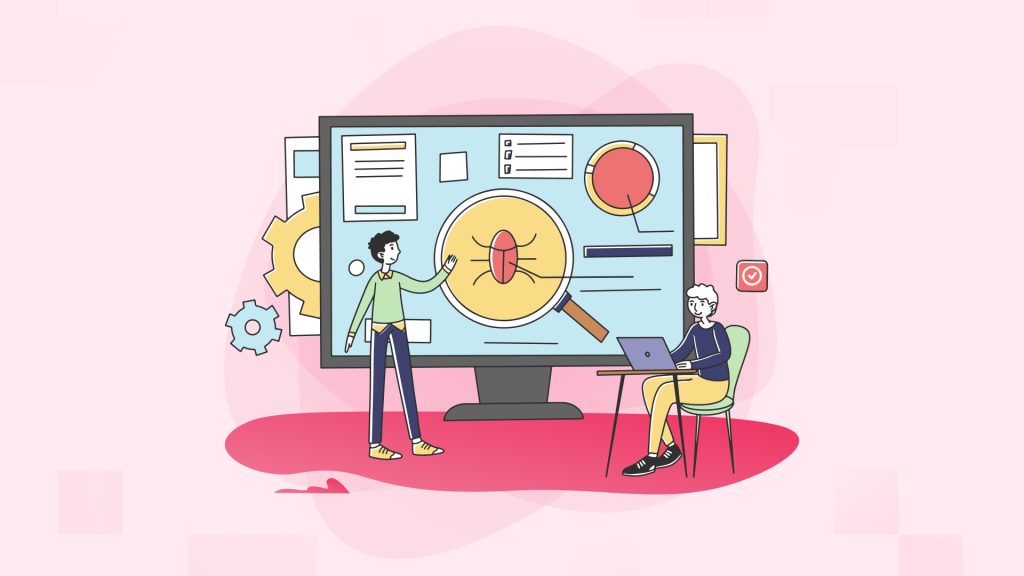7 Reasons Your CRO Strategy Isn’t Working (And What You Can Actually Do About It)

Do you feel like your CRO strategy isn’t giving you the results you want? There are some common reasons for CRO failing, but the good news is that there are also ways to fix them. Here are seven typical reasons for CRO failing and what you can do to get your strategy back on track.
You know what it’s like when a lot of people visit your website, but not many turn into customers? It’s like when people walk into your shop, look around a bit, and then just go out the door without saying anything.
Yeah. It’s frustrating.
Conversion Rate Optimization (CRO) is there to help you do better. But if you see it’s not getting results right now, the truth is you may not be making mistakes; you just might not have a few important things in place. Here are seven big reasons your CRO plan might not work. Let’s also see what you can do to make it right again.
You Don’t Really Know Who You’re Talking To

You may say you know your audience. Maybe you have some data on where they live, how old they are, and what kind of device they use. That is good, but this is not enough. These facts will not tell you what truly makes them act.
Why this matters: If you do not know what your users care about, what upsets them, or what they worry about, you miss important things. You will also not see what problems they want to fix. If you do not understand these things, your words, designs, and deals may not connect with them. When this happens, people just leave their website or app.
What you can do:
Talk to real users. Have real talks with the people who use your website or who might in the future. Ask them what they want, what is hard for them, and how your website made them feel. This is the quickest way to find out what matters to them.
- Run on-site surveys: Ask simple questions like, “What stopped you from buying today?” or “Did you find what you were looking for?” These can give you clear answers in everyday life.
- Watch how people use your site. Tools like Hotjar or Microsoft Clarity show you where people click, how far they scroll, and where they leave the page. You can see when there is a problem that you didn’t notice before.
- Check what users want: Find out which keywords or ads brought people to your site. See if your landing pages match what they want to see. If these pages do not give them what they come for, they will leave right away.
Bottom line: Personalization will only work if it is based on real understanding, not guesses.
Your Funnel’s Full of Holes
People might click on your ads and go to your site, but they are not taking the next step. This is usually a sign that something is wrong in your funnel.
Most businesses spend too much time trying to get people to visit their site. But they do not give enough attention to what happens after. If people get stuck or confused on things like product pages, forms, or checkout screens, they will just leave. This is why it is so important to look at every step of the process, not just the start.
What you can do:
- Map the whole customer’s journey. Start with the first click and go all the way to the final action. Know each step that a user takes. Where do they stop? Where do they have doubts?
- Fix “micro-conversions”: Do not only pay attention to final sales. It is good to look at smaller things that people do. This can be when they click “Add to Cart,” watch a video, or give their email. If you improve these small actions, you may fix other problems too.
- Take away anything that takes the focus away. Every page needs to show the user one clear thing to do. Get rid of extra buttons, odd links, or images that are too much. Make sure each thing on the page helps the real goal.
- Make your checkout easy: If there are too many things to fill out, or you ask people to make a profile before buying, they might leave. Let people check out as a guest. Keep the form short. Be clear about the price and delivery costs.
If the path is rough, people will not reach the end. Make the way smooth.
You’re Testing Stuff… But Without a Strategy

It’s easy to start testing things without a plan. You might change a headline. You might swap the color of a button. People say that testing is important, so you keep making small changes. But this way, you are just running random A/B tests.
Why this matters: If you don’t test with a clear reason, it will be hard to know what led to any changes you see. Even worse, you may think a test worked well when it really happened by chance. Or, you could miss a big chance that was right in front of you.
What you can do:
Start with an idea about what will happen. Do not test things without a reason. Say what change you will make and what you think will happen. Also, say why you think it will work. For example, “Changing our CTA to ‘Get My Free Guide’ will make more people sign up because it is clearer and shows there is value right away.”
Test one thing at a time. This helps, especially if your website does not get a lot of visitors. If you change your headline, images, and button all at once, you will not know what caused the change.
Put your experiments first: Use the ICE framework.
- Impact – How much could this move the needle?
- Confidence – Do we have data or research that shows it will work?
- Ease – Can we really do this without a lot of work?
Make sure your tests run for enough time. Don’t stop too soon. You need to have enough data to see if the results are real or if they just happened by chance.
The main thing to remember is this: a good test begins with a good question. If you are only trying things without a reason, you will not really learn anything.
Need a future-proof Ecommerce store or Mobile app?
Our Experts Can Help!
Your Site Feels Like a Maze

If people get confused looking for things, if your pages take a long time to load, or if your site looks old, then you will see fewer people take action on your site.
This is important because people do not like to wait. Most of them will not take 10 minutes to try to find what they need on a site. If they start to feel upset or lose patience, they just go away.
What you can do:
- Speed things up. Even waiting for one second can lower your sales numbers. Use tools like Google PageSpeed Insights to find out and fix loading problems.
- Make your navigation easy to use. Your menus need to be very clear. Use simple categories that people understand. Keep your menu clean. This helps people find what they need fast.
- Most people use their phones to go online. So, it’s important to make the mobile experience good. Make sure buttons are easy to tap. Text should be easy to read without you needing to zoom in. Forms should be simple to use on a phone.
- Use visuals to guide people as they look through your pages. Make headlines stand out so people see them first. Keep key information near the top. Add enough white space so the layout is easy on the eyes and feels open.
Bottom line: If your website is hard to use or slow, people will not trust it. You will lose sales. Make sure the experience is smooth and easy for everyone.
Looking for a Partner in Your Digital Transformation Journey?
We Can Help!
You’re Ignoring User Feedback
This one is easy. Your users are already saying what is not working, but are you hearing them?
Why this matters: If you look at your own site all the time, you may not see the big problems. Your users can spot these issues right away. They will often tell you about them if you let them.
What you can do:
- Use exit-intent surveys: Show a short survey to people who are about to leave your website. Find out if they got what they came for or why they chose not to buy. You may be surprised by what they say.
- Look at your FAQ records and support tickets. The questions that come up a lot, or the things people complain about, often show you where your website is missing something.
- Keep watching reviews and social media to find out what people say about your company or the goods. People often tell what they really feel in these posts. You can get to know about their hopes or what is making them upset.
- Conduct surveys on-site: These can be simple ratings or yes or no questions. They help you get feedback from people right away about how they feel.
The best people to help with CRO for your business are the customers. When they give you input, it can be more helpful than any report. You should always take what they say very seriously.
You’re Treating CRO Like a One-Time Fix
This could be the most important point. CRO is not something you do one time and forget about. It is a process and a plan you use for a long time.
Why this matters: People change the way they act online all the time. There is always new tech, new things people want, and others doing better work. If you do not keep making things better, you will be left behind.
What you can do:
Keep an eye on the most important numbers often. Do not look at your conversion rate only now and then. Also, watch your bounce rate, how long people stay on each page, and where they leave the process.
- Plan to run tests often: Make a calendar to do your experiments each week, each month, or every three months. This helps to keep things going and stops your plan from getting old.
- Write down everything you do. This includes what you test, what results you get, and what you learn. Even when tests do not work, the results are still helpful. They show what does not work and help you focus on the right things.
- Stay up to date with the latest trends. You can do this by reading industry blogs, joining CRO groups, and trying out new tools. CRO is always changing, so it’s important to keep learning. This helps you keep up with others in the field.
- Build a culture where people try out new things. Get your team to see each idea as something to test out. Celebrate what you learn, not just the wins.
Bottom line: There is no point where CRO is finished. The best websites are always trying to get better. They keep working on ways to make things work well for people over time.
Putting It All Together: Your CRO Fix-It Checklist
Now it’s time to see how it all works together. This is your CRO fix-it checklist. Go through each step in this list to check your website. You can use it to find and fix the things that might stop people from taking action on your page. This way, you can make your site work better for everyone.
Use this checklist to look at everything on your site. Fix what you can. The more you use it, the better your page will get over time. You will see what works and what does not. This will help you get more people to do what you want them to do on your website.
Here is a quick cheat sheet that you can use while you work on your plan to get more people to take action.
- Performance basics: Quick loading times, a responsive layout, and a smooth experience on mobile.
- User behavior insights: Use tools like heatmaps, scroll tracking, and session recordings. These can help you see how people use a website. They show what most people click on, how far they go down a page, and where they stop. This lets you find what works well and what problems people have on your site.
- Clear writing and great content: Headlines that show what you get, not just what something does. CTAs that sound friendly and tell you exactly what to do.
- Every test needs to have a clear reason behind it. Let the test go on for a good amount of time. Make sure to track what happens.
- Trust-building parts include reviews, real photos, clear policies, and secure checkout.
- Feedback loops: It is good to often get, check, and use what users say.
Your Website Doesn’t Feel Trustworthy
People do not buy from websites that are not reliable. It is very important to trust a site when you use the internet.
Why this is important Users will not feel sure if your website looks old, is missing needed details, or does not give clear ways to get in touch. If people do not trust your site, they may not move forward. This slowing down stops them from buying or signing up.
What you are able to do:
- Give clear signs that your site can be trusted. Use HTTPS, show secure payment icons, and add badges from trusted security companies like PayPal, McAfee, or Norton.
- Make the policies easy to find. Put links to your shipping terms, privacy statement, and refund policy where your customers can see them. This way, people can check these rules fast, especially when they are paying for their order.
- Use real customer reviews: Share feedback people have given. It’s best to have names, photos, or a video of them, too. Reviews from outside websites, like Trustpilot or Google, make your business look more trustworthy.
- Include real photos: Skip the stock images. Use real pictures of your team, your products, and your workspace. Show people that you are a real business.
- Add more than one way for people to reach you. Put a phone number, live chat, and email on your site to build trust. People feel better and safer when they know they can contact you if needed.
The bottom line is that trust does not happen on its own. You need to earn it and show it to other people.
Final Thoughts
If your CRO work feels like you are just guessing, you are not alone. The good news is all of these problems can be fixed. You do not need a huge budget. You also do not need a full-time data expert and you just need a plan, some curiosity, and the will to test things to see what works.
Start small. Look over your site using the seven points above. Find one area that is not good. Make it better, then see what happens.
Then keep going.
There is not a magic way to do it, but there is a method you can use. When you get used to it, you will see the results for yourself.
Let me know if you want a PDF checklist or one made for eCommerce, SaaS, or B2B.
 Shopify
Shopify

















